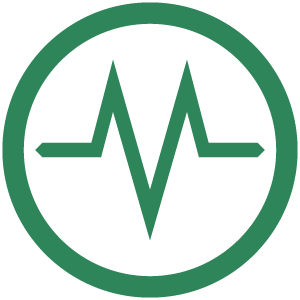Background
Stroke rehabilitation is a challenging, lengthy process that patients must undergo to regain motor function. Recovery effectiveness and efficiency can be increased by further understanding the neuromuscular system during post-stroke recovery. This involves monitoring electromyographic (EMG) signals during rehabilitation, from areas that were affected by the stroke. Analysis of the collected data can then provide insight towards which therapeutic routines and methods are most beneficial for certain muscles. Rehabilitative protocols can then be designed to enhance patient recovery in the future.
A recent study performed at the University of Florida1 examined EMG from stroke patients to identify which of three joint movements can most benefit from bilateral movement training. The EMG activation levels proved that bilateral movements are most effective for improving motor function in proximal and distal muscles.
Since rehabilitation requires a great deal of time and effort, the design of some new stroke therapy methods focus on user enjoyment and accessibility. This encourages the patients to participate in a larger frequency of therapy sessions and activities. One such example is Wii-based movement therapy, which has proven to have a positive effect in stroke rehabilitation. A study at the University of Medicine and Dentistry of New Jersey2 compared a Wii-based balance and mobility program to a standard care program. Gait speed, walking endurance, balance and dual task mobility tests were all measured over 12 one hour sessions. The percent increases were greater for the individuals in the Wii-based program.
keywords: electromyography, accelerometry, stroke rehabilitation, Wii-based movement
McNulty Research Group at Neuroscience Research Australia
McNulty Research Group at Neuroscience Research Australia3 (NeuRA) have utilized EMG to determine how the body responds to therapy and how to classify Wii-based movement therapy. The group measured EMG, using a Delsys Trigno™ wireless EMG system, three times during a two-week Wii-based movement therapy program. 16 EMG sensors were used for upper and lower limb recordings. 3D accelerometry data was also collected from each of the sensors, to represent joint and limb movements. The EMG signals were analyzed to identify the level, duration and coordination of muscle activity throughout stroke therapy. Based off the data, certain Wii-based movements were determined to be ideal for hand and finger dexterity while others increased range of motion in the shoulders.
CONCLUSION
Monitoring EMG signals during stroke rehabilitation therapy can provide valuable insight about the neuromuscular system, leading to increased recovery effectiveness. The McNulty Research Group collected EMG signals during Wii-based movement therapy and identified the level, duration and coordination of muscle activity. They concluded which Wii-based movements were best for increasing hand and finger dexterity and range of motion in the shoulder. Therapy procedures can then be tailored for individuals, making rehabilitation more efficient.
REFERENCES
- Kang N, Idica J, Amitoj B, Cauraugh JH. Motor recovery patterns in arm muscles: coupled bilateral training and neuromuscular stimulation. Journal of NeuroEngineering and Rehabilitation. 11:57. 11 April 2014.
- Deutsch, JE; Robbins, D.; Morrison, J.; Bowlby, P.G., “Wii-based compared to standard of care balance and mobility rehabilitation for two individuals post-stroke,” Virtual Rehabilitation
- International Conference, 2009 , pp. 117-20. 29 July 2009.
- Trinh, Terry. “Measuring stroke recovery…wirelessly.” The NeuRA blog. 15 August 2012. 9 June 2014.
- www.delsyseurope.wpengine.com

